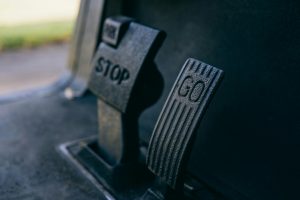Achieving the milestone of 200,000 miles in your vehicle is not only an excellent display of mechanical durability but also a testament to conscientious car care. Longevity in cars requires a delicate balance of regular maintenance, timely repairs, and proactive steps to prevent damage. The journey towards this goal extends far beyond the mere routine of oil changes and includes a comprehensive approach that targets every aspect of the vehicle. By addressing both the mechanical and aesthetic elements, you can ensure your vehicle remains in top condition for years to come. This article will explore diverse aspects of vehicle maintenance, from windshield care and brake repairs to quality garage protection and more. The following sections will provide detailed insights and practical advice on how to keep a car running for 200,000 miles.
Ensuring Clear Vision with Proper Windshield Care

It’s imperative to maintain a clean and clear windshield to ensure optimal visibility while driving. Regularly cleaning the windshield to remove dust, grime, and insect remains can significantly enhance safety. Dirt and streaks on the windshield can create glare from streetlights and the sun, which impairs visibility and increases the risk of accidents.
Over time, windshields may develop minor cracks or chips, which should not be ignored. Address these small damages promptly, either through repair or windshield replacement if necessary. Ignoring such issues can lead to more extensive damage, making driving hazardous and ultimately escalating repair costs.
In addition to preventive maintenance and addressing minor damages, consider the importance of high-quality windshield wipers. Wipers should be replaced periodically to ensure they provide a streak-free clear view. Investing in regularly maintaining your windshield is one of many ways to contribute to how to keep a car running for 200,000 miles.
Finding the Right Auto Body Shop for Long-Term Vehicle Health

Choosing a reputable auto body shop is crucial for maintaining your vehicle’s aesthetic and structural integrity over the years. A quality shop can handle everything from minor repairs to comprehensive restorations, ensuring that your car remains safe and looks good. When selecting a shop, consider factors such as certifications, reviews, and the expertise of the technicians.
Scheduled inspections and maintenance at an auto body shop can also alert you to potential issues before they become major problems. For instance, regular checks can reveal rust spots or frame damages that need immediate attention. Proactively addressing these concerns helps in preventing long-term damage and assists in understanding how to keep a car running for 200,000 miles.
Furthermore, ensuring that the auto body shop uses quality car parts for any replacements is essential. High-quality parts last longer and perform better, which is advantageous for the vehicle’s longevity and performance. Your selected shop should assure you of the authenticity and reliability of the parts they use.
How Car Detailing Contributes to a Car’s Longevity
Car detailing goes beyond a simple wash and vacuum; it involves a thorough cleaning and reconditioning of both the interior and exterior. Regular detailing not only enhances the vehicle’s aesthetic appeal but also protects it from environmental damage like rust and corrosion. Detailing can address minor wear and tear that, if left unattended, could evolve into more severe problems.
Working with professional car detailers ensures that every part of the car is given the proper care. This includes cleaning and conditioning leather seats, thorough vacuuming, and polishing the exterior to remove minor scratches. Such meticulous care helps protect various surfaces and materials within the car, thereby contributing to its longevity.
Additionally, car detailing services often include protective measures such as waxing and sealing. These treatments add an extra layer of protection to the car’s paint and surfaces, shielding them from harmful UV rays and pollutants. Regular detailing is a practical step in how to keep a car running for 200,000 miles, ensuring both the car’s appearance and performance are maintained.
Benefits of Paintless Dent Repair for a Long-Lasting Vehicle
Paintless dent repair (PDR) is a method used to remove minor dents and dings from the vehicle without altering the paint. This technique is particularly beneficial because it preserves the original paintwork, which is critical for maintaining the car’s value and structural integrity. PDR is a cost-effective option for keeping your car looking its best without resorting to more invasive repair methods.
Choosing paintless dent removals whenever possible helps prevent rust and corrosion that often start at the point of a dent. By eliminating dents without compromising the paint, PDR conserves the factory seal and original paint job, maintaining your vehicle’s aesthetic and protective layers.
Employing PDR also reduces the environmental impact as it eliminates the need for fillers, primer, and paint, contributing to a more eco-friendly approach to vehicle maintenance. This method is a practical component of a comprehensive strategy on how to keep a car running for 200,000 miles by avoiding potential damage that could otherwise escalate into more severe issues. Regular maintenance and repairs, such as PDR, can help extend the lifespan of a vehicle by preventing small issues from turning into major problems. By incorporating PDR into your maintenance routine, you can ensure that your car stays in optimal condition for longer periods of time.
Why Regular Brake Maintenance is Crucial for High-Mileage Cars
The braking system is one of the most critical safety components in any vehicle, making regular brake maintenance indispensable. Over time, brake pads, rotors, and other components wear out and require replacement or repair to maintain optimal functionality and safety. Neglecting brake repair can lead to reduced stopping power, increased stopping distances, and ultimately, dangerous driving conditions.
Routine inspections and timely brake repairs not only ensure safety but also prolong the life of your car. Replacing worn-out parts before they fail can prevent more extensive damage to the braking system and other related components. A well-maintained braking system is essential for how to keep a car running for 200,000 miles.
Brake maintenance should include regular checks of the brake fluid levels and the condition of the brake lines. Ensuring that the brake fluid is clean and at the correct level helps maintain the hydraulic pressure necessary for effective braking. By paying close attention to the braking system’s health, you can enhance your vehicle’s longevity and reliability on the road. Regularly inspecting the brake pads and rotors for wear and tear is also crucial in maintaining optimal braking performance. Additionally, scheduling routine brake system inspections with a qualified mechanic can help catch any potential issues early on before they become more costly to repair.
Knowing When to Rotate and Change Your Tires

Proper tire maintenance is crucial for vehicle performance and safety. Knowing when to rotate and replace your tires can significantly impact your car’s longevity. Regular tire rotations help distribute wear evenly across all four tires, extending their life and improving vehicle handling.
Monitoring tire tread depth and air pressure is also essential. Worn-out tires or those with uneven tread can decrease traction and increase the risk of accidents, particularly in adverse weather conditions. Frequent checks and adjustments ensure that your tires remain in good condition, contributing to the overall health of the vehicle. In addition, maintaining proper tire pressure can also improve fuel efficiency and reduce the risk of blowouts. By staying proactive with tire maintenance, you can ensure a smoother and safer driving experience for yourself and others on the road.
Regularly inspecting the alignment and balance of the tires prevents uneven wear and reduces strain on the suspension and steering systems. Keeping your tires in top shape is a fundamental aspect of how to keep a car running for 200,000 miles, ensuring safety, efficiency, and longevity. Proper tire maintenance also includes rotating them regularly to promote even wear and extend their lifespan. Additionally, maintaining the correct tire pressure can improve fuel efficiency and the overall performance of the vehicle.
How Ceramic Coatings Protect Your Car’s Finish Over Time

Ceramic coatings provide a long-lasting protective layer over a car’s paint, offering superior resistance to scratching, chemical contaminants, and UV damage. Unlike traditional waxes and sealants, ceramic car coatings bond with the vehicle’s surface, creating a durable shield that enhances the car’s aesthetic appeal and longevity.
Applying ceramic coatings can significantly reduce the need for frequent washing and waxing, as the protective layer repels dirt and water. This hydrophobic effect maintains the car’s shine and cleanliness with minimal effort, preserving the vehicle’s appearance over time. Overall, ceramic coatings provide a cost-effective solution for maintaining a car’s exterior in pristine condition. With proper care and maintenance, a ceramic coating can last for several years, offering long-term protection and enhancing the resale value of the vehicle.
The enhanced protection offered by ceramic coatings translates into fewer instances of paint damage and fading, which are common over a car’s lifespan. Integrating ceramic coatings into your maintenance routine is a practical step in how to keep a car running for 200,000 miles, safeguarding its exterior against environmental threats.
Maintaining Car Parts for a Vehicle That Lasts
Each car part plays an integral role in the vehicle’s overall performance and longevity. Regular maintenance and timely replacement of key car parts like spark plugs, air filters, and timing belts are crucial for ensuring the engine runs efficiently. Ignoring these seemingly minor components can lead to significant mechanical failures and costly repairs down the line.
Keeping an eye on the condition of essential fluids such as engine oil, coolant, and transmission fluid is equally important. Regularly checking and replenishing these fluids prevent overheating, reduce friction, and ensure the smooth operation of various car parts.
Scheduling periodic comprehensive inspections can uncover hidden issues before they escalate into serious problems. A proactive approach in maintaining car parts not only enhances performance but also supports your goal of understanding how to keep a car running for 200,000 miles.
The Importance of Quality Garage Protection for Your Vehicle’s Maintenance
A well-maintained garage offers the ideal environment for preserving your vehicle’s condition. Implementing effective garage floor coverings can protect the floor and vehicle from spills, stains, and moisture. These coverings add a layer of safety and cleanliness that benefits both the vehicle and the garage structure.
Equally important is ensuring your garage is secure and easily accessible. A quality garage door installation adds security, while an efficient door system provides quick and smooth access to your vehicle. Proper insulation and sealing can also prevent extreme temperature fluctuations that might affect the car’s paint and mechanical parts.
Investing in a well-equipped garage underscores a commitment to vehicle longevity. Effective storage solutions, adequate lighting, and a clean environment support regular maintenance tasks and protect your investment, contributing significantly to understanding how to keep a car running for 200,000 miles. Additionally, a well-maintained garage can also help increase the overall value of your home. Regular upkeep and organization of your garage space can enhance the aesthetic appeal and functionality of your property.
Keeping a car running for 200,000 miles demands a comprehensive approach to maintenance that covers various aspects ranging from windshield care and brake maintenance, to finding the right auto body shop and investing in paintless dent repairs. Consistent and proactive car detailing, tire maintenance, and the application of ceramic coatings are essential steps in protecting your vehicle from the elements and wear. Equally, maintaining car parts and ensuring quality garage protection through garage floor covering and garage door installation are vital components of this endeavor. By prioritizing and executing these strategies diligently, you set the stage for prolonged vehicle performance and reliability. Committing to this level of care will not only maximize the life span of your car but also enhance your overall driving experience.
Regular attention to each aspect of your vehicle’s health helps prevent minor issues from escalating into significant problems, ensuring that you understand the full scope of how to keep a car running for 200,000 miles. Ultimately, the key lies in combining routine maintenance with timely repairs and upgrades, always prioritizing the long-term health and functionality of your vehicle.
Maintaining a car over the long haul requires dedication and informed decision-making. By following these detailed guidelines, you can optimize your chances of reaching and even surpassing the 200,000-mile benchmark, enjoying a safe, efficient, and reliable ride throughout the journey.







